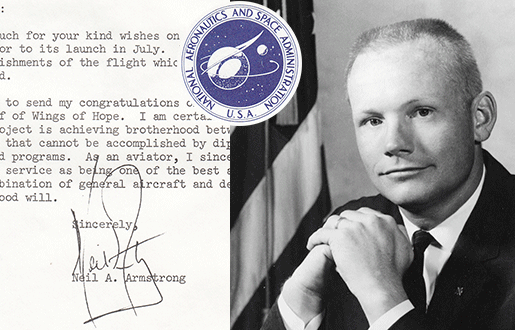Timeline - 1960s
The timeline is an ongoing project that will be updated throughout the year. More content will be added as time goes on.
1960
Famine in the Turkana Desert region brought on by a long period of drought, then followed by torrential rains and flooding results in the destruction of the area’s vegetation and destroys 80% of the livestock. The Kenyan government mobilizes air supplies and relief camps, however the situation remains desperate.
1961
August: Officials in Nairobi, Kenya open their doors to allow missionaries into the area in order to help bring relief to the suffering of their people.
December: The Medical Missionaries of Mary establish their first relief camp in Lodwar, 158 miles north of Kitale (as the crow flies) where the main hospital is located. This trip by jeep takes about 15 hours on a good day.
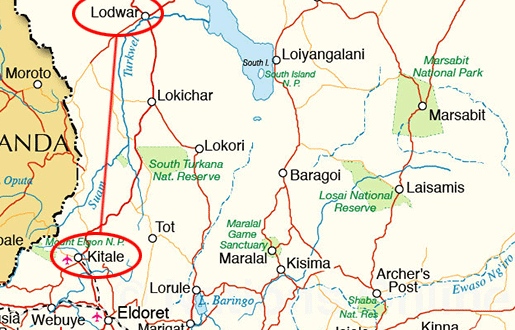
Early 1962
Mike Stimac, teacher of science and aviation at St. Joseph’s High School in Cleveland, Ohio, arrives to the Mang’u mission school in the foothills of the Aberdare Mountain Range in Kenya (~20 miles NE of Nairobi.) From the Mang’u High School, he would found the Amateur Radio Club, Electronics Club, and Air Program. Compelled to bring every experience to his new students, he would establish a radio station and train students to apply for amateur radio licenses, and rent airplanes from Safari Air at Wilson Airport and teach them to fly. These programs are still active in the Mang’u High School to this day.

Summer 1962
Bishop Joseph B. Houlihan of Eldoret, the Ordinary of East Africa whose diocese covers the Turkana, appealed for assistance from Catholics in the United States. Pacific Northern Airline pilot, Jerry Fay, corresponds with Houlihan and when the question of transportation difficulties arose, Houlihan pointed out how useful a light plane would be.

September 1962
Jerry Fay organizes the Marian Medical Aircraft Fund with the goal to raise $11,000 for a Piper Super Cub (PA-18-150), plus parts and high frequency radio transmitters. He enlists the help of Pacific Northern Airlines pilot Bud Donovan.
December 1962
The purchase of the Piper Super Cub was transacted through B. J. Oswald of Oswald Flying Service in Tacoma, WA.
Initially, the Kenyan government couldn’t understand the motives of the two men.
“They thought we were going to start a flying service and make a killing.” Fay laughed. “Bishop Joseph Houlihan of Eldoret in East Africa, explained our purpose and that we’d help the natives who live so far from medical aid. Now they can’t do enough for us.”
Jerry Fay

February 1963
Fay and Donovan left for Naples, Italy, then had an audience with Pope John XXIII at Rome, and then to Addis Ababa, Ethiopia. Washington’s U. S. Sens. Warren G. Magnuson and Henry M. Jackson got the project to qualify under the foreign aid program. It meant Navy and Air Force help. The Navy agreed to move the crated plane to Naples and then the Air Force carried the crate to Addis Ababa. This mission was called “Operation Handclasp.”
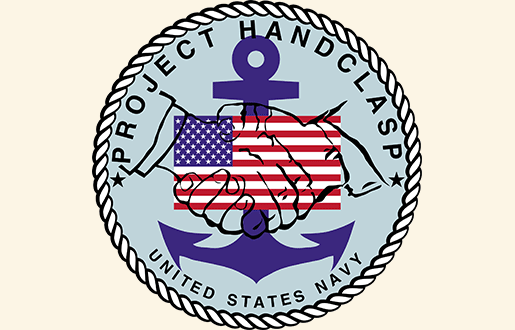
March 1963
“It arrived in a big crate on Saturday,” Donovan said. “I had to wait until Monday to get started on it. But I had it together by Wednesday night. Thursday I took it up for the first time – and it felt good to be finally flying again.”
Bud Donovan
April 1963
Donovan later flew from Addis Ababa to Nairobi, about 700 miles. After straightening out customs problems, he flew to Kitale, the town nearest the mission territory in the Turkana Desert. By the latter part of April, Donovan was flying supplies into the mission stations and giving the priests and nuns as much information on the plane as possible. He flew some 80 hours in three weeks.
April 23, 1963: Bishop Houlihan recruits Brother Mike Stimac to pilot the new Super Cub, giving him the keys to the plane.

June 1963
Sister Michael Therese Ryan visits Seattle to meet Fay and Donovan. They saw much progress in the Turkana while they were there. New buildings for healing and teaching the natives were nearly completed. Greater food and medical supplies reached six missions.
Sister Michael Therese Ryan of the Medical Missionaries of Mary to arrive in Africa. The Eldoret project is the first to employ a plane and the first among all missionary groups to use a Sister-pilot.

“We were convinced that air transportation is the only answer to the mission-supply problem in Africa,” both pilots said. “We can see where this small effort of ours proved this. And we hope we will be able to get this message across in this country to those who have a means to supply the air transportation.”
Fay & Donovan
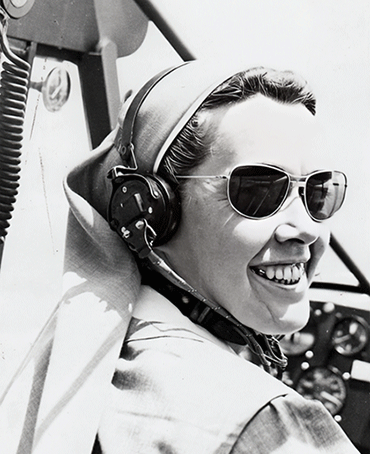
Late 1963
Inspired by the bishop’s story of tragedy in the desert, a group of St. Louis men laid the foundation for the support of air mission service in Turkana. Following the bishop’s 1963 appeal, Joseph G. Fabick of the John Fabick Tractor Co. and William D. Edwards, a manufacturer’s representative, started the Turkana Desert Fund to raise money for a new, all-metal aircraft.
Meanwhile in Dallas, George E. Haddaway spearheaded a drive to supply the medical missionaries with a workhorse plane. Haddaway is a director of the Turkana Desert Fund, also an influential aviation publisher (Flight Magazine) and a Protestant.

The creation of this Fund is cited as the birth of what would eventually become Wings of Hope, which would officially be incorporated 4 years later.
“In all my 30 years of aviation publishing I’ve never found a greater need for an airplane.”
George Haddaway
Early 1965
Mike Stimac creates UMATT (United Missionary Air Training and Transport), a flight training program at Dayton, Ohio, that will be open to members of all faiths interested in becoming pilots or in learning how small planes can be used more effectively in African missionary work. Thomas Dwyer would go on to be the director of the program at the University of Dayton headquarters.
Since the Super Cub arrived in 1963, it has become apparent that the plane’s fabric wings are not well suited to the harsh desert environment of the Turkana. Oddly enough, Hyenas begin nibbling away at the material, attracted to the phenol in the plane’s fabric covering.

April 25, 1965
The Turkana Desert Fund raises over $30,000 to purchase a new Cessna U206 for the newly formed UMATT organization. This all-metal aircraft is larger and more powerful, and is better suited to withstand the desert conditions in Kenya.
"This double door work plane with 285 horsepower Continental motor has been donated by friends of aviation and of missionary endeavor."
Joseph Fabick
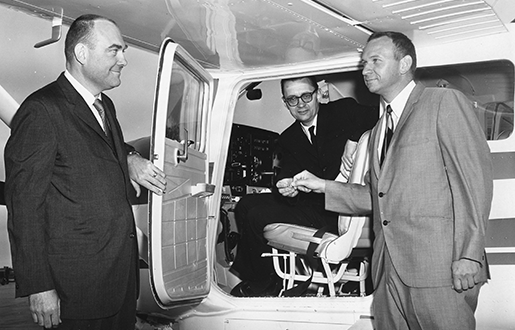
Fabick hands over the keys to Dwyer
WATCH: Cessna U206 leaves St. Louis for Nairobi
"UMATT is a service for men of good will in all Faiths, working to help those whose lives and hopes will take on new dimensions because of the miracle of the airplane. It means fleetness to doctors to heal the pained; it guarantees transport of bread and milk to the hungry; it means dignity to the youth of emerging nations, and it gives strength to the energies of the dedicated missionaries and Peace Corps workers in the field. UMATT is efficiency … union … strength and peace."
Thomas Dwyer
May 25 - June 10, 1965
The plane would begin its ferry trip from St. Louis, Mo., to Nairobi, Kenya in the capable hands of Max Conrad, a legendary pilot and holder of several long distance flight records. The trip’s itinerary was paired with press events along the way and blessed by religious leaders of different faiths. The ferry began with a ceremony at the Ozark Airline Hangar at Lambert–St. Louis International Airport, then on to:

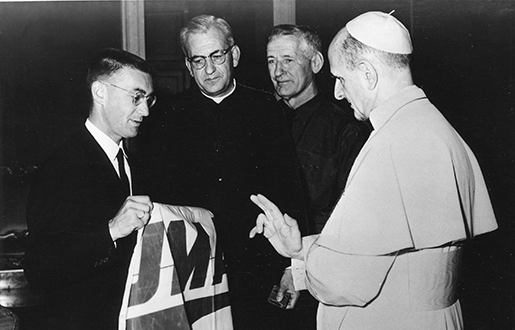
- UMATT headquarters at the University of Dayton
- Two days of public appearances and press in New York
- Medical Missionaries of Mary ceremony in Boston
- St. Patrick Missionary Society ceremony in Shannon, Ireland
- Papal blessing by Pope Paul VI in Rome
- Mike Stimac meets Conrad and joins the ferry flight
- Conrad’s ferry flight ends in Nairobi on June 10, 1965
November 1966
Missionary pilot Guy Gervais contacts the newly formed Wings of Hope after spending six years flying in Papua New Guinea, and interviews with Bill Edwards in St. Louis. Bill needs a pilot for the Canadian Franciscans in Iquitos, Peru. Guy joins Wings of Hope and spends the next year building more qualifications:
- earned an FAA instrument rating for flying in bad weather
- earned an A&P license so he could perform maintenance on his own plane
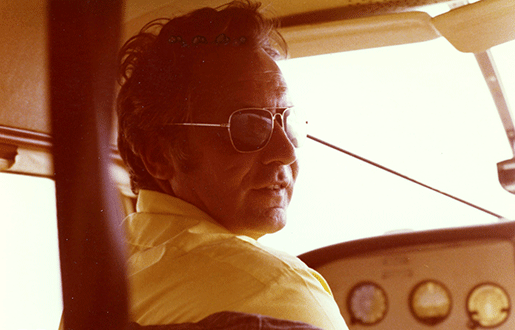
July 17, 1967
Wings of Hope is incorporated under the “General Not For Profit Corporation Law” of the State of Missouri. The Board of Directors are: Joseph G.Fabick, John C. Versnel, and William D. Edwards.
"... to provide without charge, remuneration or profit, transportation and communication facilities for missionaries, medical missionaries, teachers, and other religious, educational and medical workers, without distinction as to race or religion ... to provide, maintain and operate an airplane service; to transport freight, passengers and baggage by aircraft ..."
excerpt, Wings of Hope, Inc.'s Articles of Incorporation
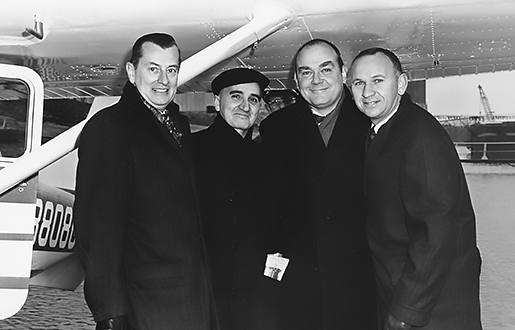
December 12, 1967
Guy Gervais begins his long journey to Peru in the new Cessna U206B float-plane (N3808G) from the Mississippi River in front of the Gateway Arch in St. Louis. The plane is dubbed the New Spirit of St. Louis.
Guy would add two auxiliary fuel tanks inside the plane at New Orleans, and then later encounter fuel pump failure while over the Gulf of Mexico. He was forced to make an emergency landing in the sea after getting the attention of a German freighter, thankfully the ship had a crane and was able to rescue not just Guy, but also the plane from the rough waters. This story made international news and helped increase awareness of Wings of Hope.
January 25, 1968: Guy Gervais would again depart to Peru with the aid of pilot Bob Iba, who installed his own fuel system. This time the mission is successful and Guy Gervais goes on to serve the people in and around Iquitos.

"Do not worry, Padre Guy. You can relax now. Have a good cognac and some food. By radio, we will advise the port authorities and Wings of Hope that we can leave the aircraft in New Orleans after we unload our cargo in Tampico, Mexico."
Captain of the freighter, Bremen, Germany
January 17, 1969
The IRS officially rules Wings of Hope exempt from federal income tax under section 501(c)(3). The officers and directors are defined as the following:
- Joseph G. Fabick, President & Director
- John C. Versnel, Vice President & Director
- William D. Edwards, Secretary & Director
- George E. Haddaway, Director
- Robert Minges, Treasurer

September 12, 1969
Bill Edwards receives a letter from Neil Armstrong in response to Bill’s letter of encouragement and support prior to the launch of the Apollo 11 mission in July 16, 1969.
"I certainly want to send my congratulations on your efforts on behalf of Wings of Hope. I am certain that this valuable project is achieving brotherhood between nations in a way that cannot be accomplished by diplomacy or government aid programs. As an aviator, I sincerely salute this fine service as being one of the best achievements of the combination of general aircraft and dedicated individuals of good will."
Neil Armstrong
